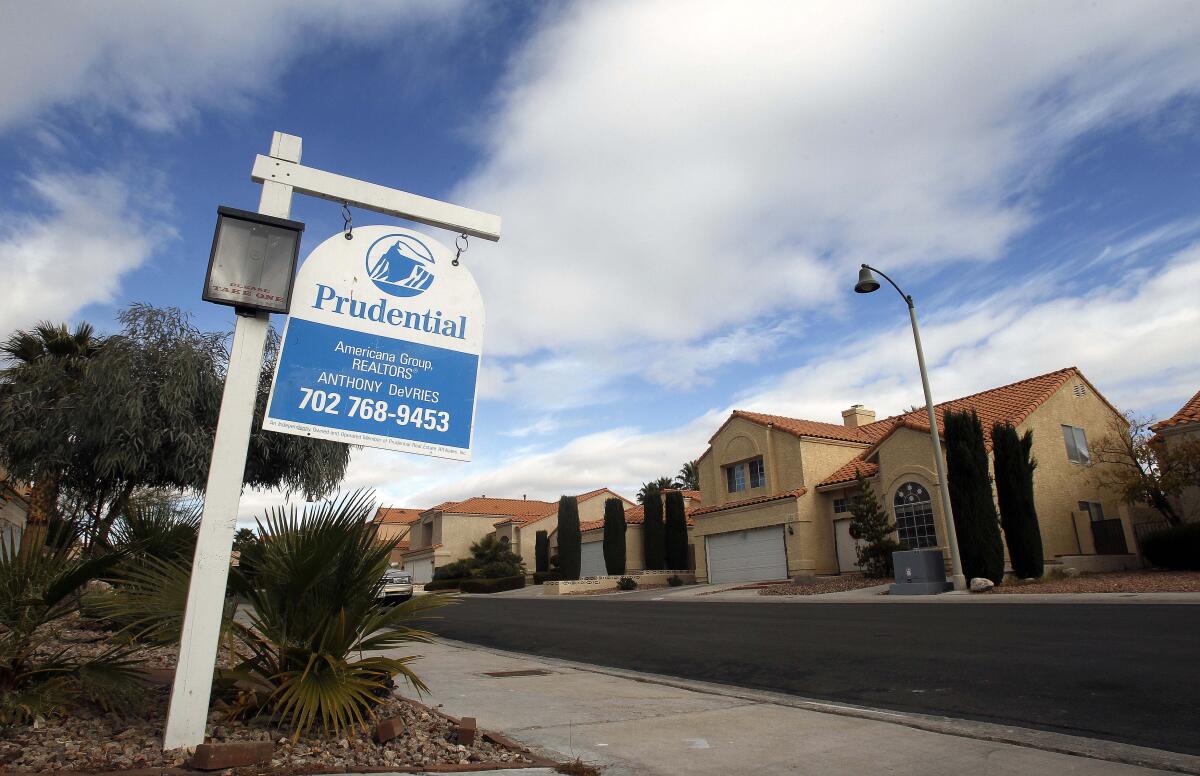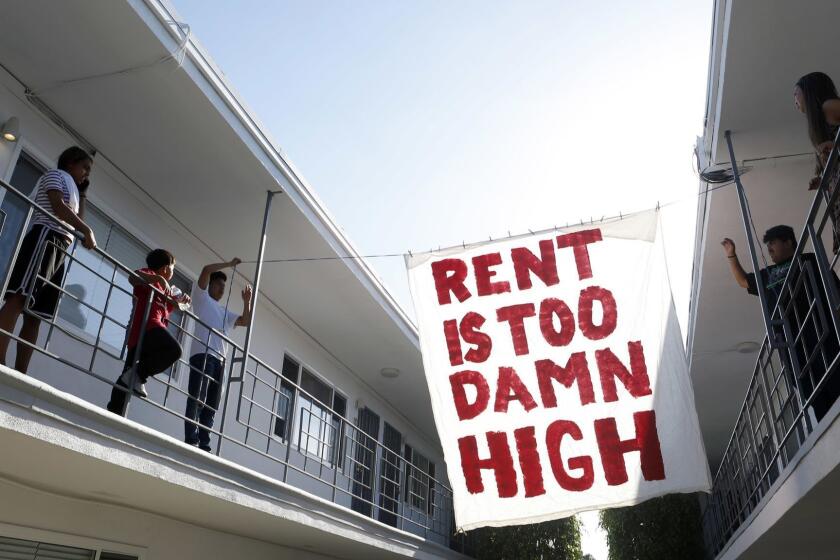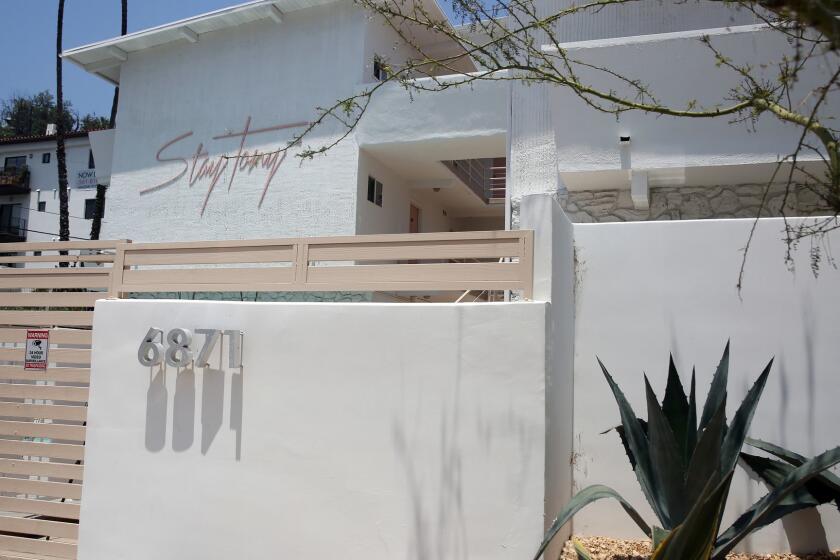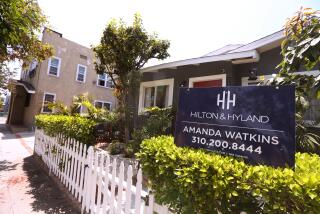Housing affordability crisis spreads to the Midwest and other lower-cost areas

Low mortgage rates and thriving employment should be the recipe for a strong housing market. Instead, they’re deepening America’s affordability crisis.
What began on the coasts, in areas such as New York and San Francisco, is now radiating into the nation’s heartland and to cities such as Las Vegas and Charleston, S.C. Entry-level buyers are scrambling to purchase homes that are in short supply, sending values soaring.
Expectations that the Federal Reserve will cut interest rates this week will do little to change the sober reality: For many, prices have risen much faster than incomes, pushing homeownership out of reach for a new generation of hopeful buyers. That’s cooling the market, with the 2019 spring season shaping up as the slowest for sales in five years, according to CoreLogic Inc.
“All signs point to a housing market that should be doing really well and it’s not,” said Danielle Hale, chief economist for Realtor.com. “The No. 1 constraint, despite low mortgage rates, is that people can’t find housing that they feel is affordable.”
Many buyers in expensive West Coast cities have already retreated after a surge in prices squeezed them out. But in other areas, demand is still robust, fueled by a strong economy and this year’s rapid decline in borrowing costs. There’s just too little to buy and too much competition.
Nationally, consumer prices are barely moving, with inflation clocking in at just 1.8% for May.
Dean Rusch, a 29-year-old chemical-plant worker, has been trying to buy a starter home for less than $200,000 in Louisville, Ky., since April. On three occasions, houses he planned to tour were snapped up before he could get there. He was outbid on another. He finally had an above-asking offer accepted Sunday on a house listed for about $199,000, but only after his agent locked the door during a showing, keeping another buyer out. For much of his hunt, it was slim pickings.
“I’ve looked at some crappy ones,” Rusch said. “I used to be in the fire department and smelled some crazy stuff. But one smelled so horrible that it gave me a headache.”
Recent months have shown a growing divergence between the high and low ends of the U.S. market. Prices in the bottom third jumped about 9% in June from a year earlier, compared with 1.1% growth for the top third, data from Redfin show. Meanwhile, sales of lower-priced homes plunged almost 20% as buyers struggled to find properties in their range, according to Zillow.
“We have a lot more buyers preapproved for mortgages than people closing on homes,” said Jeff Davis, Rusch’s agent. “What that means is the struggle is not in the financing. The struggle is in the inventory.”
There are some signs of a pickup in the market. Contracts to buy previously owned homes rose 2.8% in June from the previous month, exceeding economists’ forecasts, the National Assn. of Realtors reported Tuesday.
Still, the outlook is particularly bleak for first-time buyers. The number of new homeowners created in the second quarter was the lowest since 2006 and just a third as many as a year earlier, the Census Bureau reported last week. Homeownership among black Americans fell to the lowest level since at least 1970.
Unequal recovery
The housing recovery that began in 2012 has been unequal from the start. About 6 million Americans lost homes in last decade’s crash and needed time to rebuild their credit. Private equity firms such as Blackstone Group Inc. swept in to buy foreclosed properties at deep discounts and rented them back to many of those displaced former homeowners.
Now those people are back in the market, along with the bulging population of millennials eager for their first crack at homeownership. But many of the properties they want have already been picked over. Builders have focused on wealthier buyers willing to pay higher prices, and now some areas have too many expensive homes and too few homes where they’re needed.
Affordable homes disappeared first in technology and financial hubs such as Silicon Valley and New York, where buyers with big paychecks pushed up prices. Now values are flattening after many would-be homeowners have been forced to the sidelines. In some areas, demand has also been hit by a pullback in foreign buyers and by new federal limits on property-tax deductions — as well as by fears that a recession may be around the corner.
But even in traditionally affordable parts of the country, renters worry that if they don’t act, someone else will snap up their piece of the American dream.
Last week, an upstart company started providing furnished apartments for business travelers on Franklin Avenue in Hollywood.
“People do at this point in the cycle start getting a little panicked that they need to get into the market,” said Jenny Schuetz, a fellow in the Metropolitan Policy Program at the Brookings Institution. And, with lower mortgage rates, “a lot of people who were on the fence between renting and owning may look at owning.”
In Louisville, less than 20% of listings were affordable to buyers in the bottom 30% of incomes in April, according to Realtor.com. That’s down from 23% of listings a year earlier and from 38% of listings in 2015. The trends are similar in other low-cost cities; in Charleston, only 6% of listings meet that affordability threshold.
‘Clogged up’
Las Vegas, which was hit hard by the last crash and then sharply rebounded, now is seeing a rapid decline in sales because there’s little on the low end worth buying. Many single-family houses were purchased by investors and now are rentals. The result is there aren’t enough owners of entry-level homes for people to buy and then move up to the next rung of the ladder, said Thomas Blanchard, president-elect of the Greater Las Vegas Assn. of Realtors.
“Our inventory is clogged up, causing a backup of people that want to buy,” Blanchard said. “It’s a self-fulfilling prophecy: Nobody is willing to move anywhere because they’re afraid they won’t find a house to buy.”
Las Vegas was among U.S. cities with the biggest annual price increases in May: a 6.4% gain, according to an S&P CoreLogic Case-Shiller index released Tuesday.
Mike Manesiotis, a 28-year-old who works in software sales in Charleston, says his friends in Seattle and the Bay Area would say home prices where he lives are a steal. But the salaries are also much lower, he said.
Manesiotis wants to live in or near downtown, within a short walk or Uber ride of bars and restaurants, and pay less than $350,000 — near the median price for a single-family home in the city. But he hasn’t found anything he likes. The return of low mortgage rates hasn’t helped.
“It’s not the interest rate; it’s the sheer cost,” he said. “You’re spending $300,000 on a home that’s 1,000 square feet. You get two bedrooms, one bath, and it needs a lot of work.”
More to Read
Inside the business of entertainment
The Wide Shot brings you news, analysis and insights on everything from streaming wars to production — and what it all means for the future.
You may occasionally receive promotional content from the Los Angeles Times.












